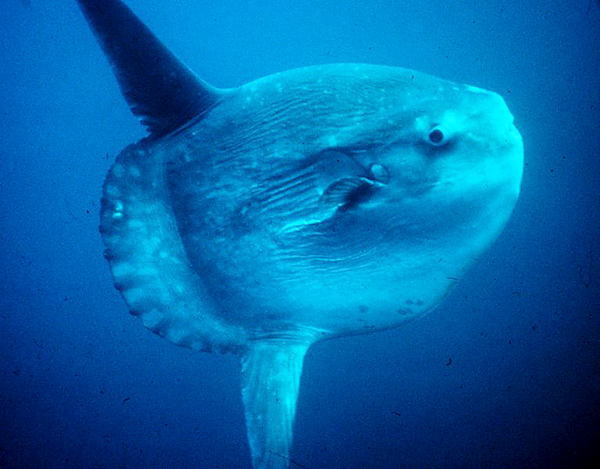PORTLAND — Fish commonly found in warm ocean waters to the south have become more common in New England as ocean temperatures rise.
Over the past two years, fishermen in southern New England have seen an increase in croaker, cobia and spot, species more commonly found in waters off the mid-Atlantic. Certain types of skates and blue crabs are also becoming more numerous, fishermen say.
In the colder Gulf of Maine waters north of Cape Cod, black sea bass have become more prevalent the past two summers. Longfin squid, which are found primarily south of Cape Cod, were present in Maine waters during the 2012 summer, resulting in new fisheries and markets being developed for the season.
Before last year, lobster fisherman David Cousens of South Thomaston, Maine, had seen only one ocean sunfish in nearly 40 years of pulling traps. This summer he’s seen a bunch of them, sometimes days in a row.
Cousens even found some sea horses in his traps last summer. Scientists say there have also been reports of triggerfish and filefish — colorful species that look more suited to an aquarium — and juvenile snowy grouper, which is normally found in the Caribbean or off the southern U.S.
“There’s no question the Gulf of Maine is changing rapidly,” Cousens said. “Stuff you’ve never seen in your lifetime that you would think would take 200 or 300 years to slowly change has happened in the past 20 or 30 years — the last 10 years, really. It’s scary, but what are you going to do about it? You can’t stop global warming.”
Ocean temperatures worldwide are rising rapidly, with some of the fastest warming taking place in the northwest Atlantic Ocean. Temperatures off the Northeast U.S. hit an all-time high during the ocean heat wave of 2012, affecting virtually all ocean life.
Atlantic cod and many other commercially valuable fish in New England have been shifting northeast from their historical distribution centers in recent years because of warming waters. Warm water was blamed for lobsters shedding their shells far earlier than usual last year, leading to a glut that created havoc within the industry.
At the same time, species that normally live in warmer waters are showing up with greater frequency off New England, scientists say, largely because of rising ocean temperatures. Other factors, such as fishing pressure and environmental changes including increased acidification and lower salinity levels, are believed to be at play.
Third-generation fisherman Rodman Sykes, who fishes out of Point Judith, R.I., said he’s been catching more barndoor and clear-nose skates and torpedo rays. And dockside workers have reported seeing mahi mahi swim by.
The fish aren’t abundant enough yet to make money from. But in time, he said, fishermen in southern New England could benefit financially from the newcomers.
“But I’m more fearful for the guys down south who might be losing some of their opportunities,” Sykes said. “Maybe something will replace them, or they’ll become more spread out. Or maybe they’ll come up here and go back down there for the winter.”
Many of the warmer-water species that are now becoming more common have been coming to New England for years but in smaller numbers, said Mike Fogarty, chief of the ecosystem assessment program at the National Oceanic and Atmospheric Administration’s Northeast Fisheries Science Center in Woods Hole, Mass.
Those that made it to New England would typically die in years past when the waters got cold in the winter, he said, but more of them are now surviving because of the temperatures.
A study written by Fogarty and other researchers that appeared in the journal Science this month concludes that climate change has resulted in shifts in where and at what depths many marine species are found throughout U.S. and Canadian waters. The shifts have not been uniform and are most likely caused by local climate conditions.
As the fish migrate, fishermen will need to adapt with new fishing gear or new approaches to harvesting the commercially valuable species, said Jon Hare, a fisheries oceanographer at the Northeast Fisheries Science Center’s laboratory in Narragansett, R.I.
Regulators are going to have to figure out how best to manage the fish. And scientists are going to have to answer new questions on the changing ecosystem as shifting distribution patterns result in a new mingling of species.
After seeing so many changes the past couple of years, fishermen are asking themselves what’s next.
“I guess we’ll have to see what happens and adapt, but who knows?” Cousens said. “I don’t really know what the answer is. I know I can’t snap my fingers and change anything.”
Copy the Story LinkSend questions/comments to the editors.



Success. Please wait for the page to reload. If the page does not reload within 5 seconds, please refresh the page.
Enter your email and password to access comments.
Hi, to comment on stories you must . This profile is in addition to your subscription and website login.
Already have a commenting profile? .
Invalid username/password.
Please check your email to confirm and complete your registration.
Only subscribers are eligible to post comments. Please subscribe or login first for digital access. Here’s why.
Use the form below to reset your password. When you've submitted your account email, we will send an email with a reset code.